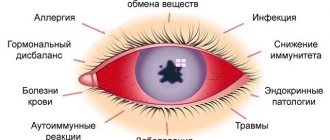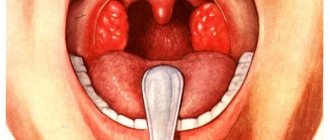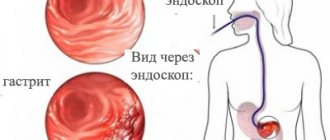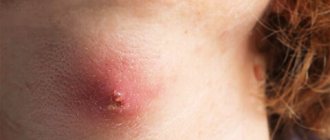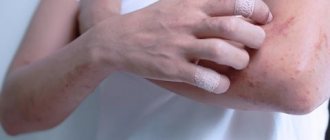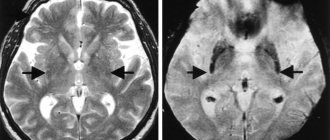Sleep paralysis is a temporary state of the body that occurs at the border between sleep and reality. It is manifested by the onset of muscle atonia before the transition to sleep, as well as the awakening of consciousness before muscle tone is restored. A synonym for the condition is the term “sleepy stupor.”
The state of sleepy stupor is not a very rare deviation. Most often, this trouble happens to patients suffering from irresistible daytime sleepiness (narcolepsy). Muscle paralysis or loss of tone is usually accompanied by strong hallucinations that frighten the person, to which he cannot react properly due to stupor.
What do the statistics show?
The question of what causes sleep paralysis is under study. According to general statistics, approximately 7% of the population has experienced sleep paralysis at least once during their life. Students are more susceptible to it (28.3%). It has been hypothesized that the nature of such muscle paralysis may be due to irregular sleep or prolonged exposure to stress.
Data obtained from a study of the health of students show that 75% of students who experienced a state of sleep paralysis had at least one case of hallucinations at this moment. About 10% of respondents reported a frequency of hallucinatory visions of 3 or more times. 90% of students who were in a state of sleep atony experienced a strong feeling of fear and horror when falling asleep.
This sleep disorder occurs in the fairer sex 1-2% more often than in the stronger sex. Since the difference is insignificant, it means that the risk of developing sleepy stupor does not depend on gender. Sleep paralysis can also occur in children.
Patients with psychiatric diagnoses usually suffer from insomnia atony: it developed in 31.9% of such patients. Among patients diagnosed with panic disorder syndrome, sleepy stupor occurred in 35%.
Shackled by fear
A dark room, your eyelids lift heavily, your breathing quickens, your heart beats like crazy. You lie in your bed with a feeling of vague anxiety, which will soon turn into real horror. The eyes frantically search for the source of danger. But the darkness has already shackled you. Your arms and legs don't move, you feel completely helpless. And at that moment an incomprehensible black shadow hovers over you, as if out of curiosity it stopped to look at you. After a few seconds the shadow disappears. And you still can't move. Only the eyes look around in horror. A whole swarm of shadows gathers around, each wanting to look at the one chained by sleep. You try to scream, call for help, but your mouth feels like it’s been sealed with tape. You feel like a dry crust has covered your lips. At some point, one of the shadows hovers very close above you, and you notice its small red glowing eyes. You are again trying to break out of captivity, but it is useless. The shadow opens its huge tarry mouth. There is a pounding sound at the temple, like a drum roll. Suddenly silence. The shadows disappeared. Someone persistently pats you on the shoulder, it’s your husband, or maybe your brother. It doesn’t matter at all, because the horror has passed. But it repeats itself over and over again, every night. And you don't know when it will end.
Development mechanism
Sleep as a physiological process consists of two phases: slow and fast. First comes the slow phase, then the fast phase, characterized by a drop in skeletal muscle tone. Breathing cycles become more frequent and inhalations become shorter. Brain activity during sleep increases to the level characteristic of the waking state.
In the case of a sleep disorder, the sequence of processes is confused, so a person becomes conscious before muscle tone normalizes. A feeling of immobility appears - this is sleepy stupor (paralysis, muscle atony).
This can happen during the transition to sleep: REM sleep has already begun, but consciousness has not yet switched off. A sleeping person cannot take a deep breath (after all, in the REM sleep phase, short and frequent breaths are reflexively taken). There is a feeling of tightness in the chest.
The feeling that you can't move is a symptom that signals danger to the nervous system
In response, there is a huge release of neurotransmitters, as a result, the person experiences fear, anxiety, and hallucinations. It seems to him that he is gliding in the air, because the vestibular apparatus is working, but does not receive feedback from peripheral organs due to immobility.
Nevus warty, what is it?
Warty (epidermal) nevus is a keratinized growth connected into closely spaced dark convex plaques; it exists in multiple formations on the skin, sometimes located solitary. Often appears in the extremities, less often on the head or face. The size of the growth can be tiny, from 1 mm, but there are also huge spots - up to 20 cm.
This anomaly is congenital and appears almost immediately after birth, but is sometimes diagnosed a little later. At first, a convex formation may be noticed on the child’s skin. With age, it darkens, acquires a brown or yellowish color, and remains with the person until the end of his life. The nevus becomes more noticeable as the child grows older and also increases in size. But it does not grow in width; the increase occurs due to the growth of the area of the epithelium that it occupies. Gradually, its surface becomes keratinized, and the nevus increases in height. If the top layer has been injured, you can notice that it has grown.
It is believed that nevus is a harmless growth on the skin, but facts of its degeneration into malignant neoplasms have been recorded and account for up to 10% of all existing cases
The appearance of inflammation and ulcers indicates a high probability of its degeneration into a malignant form.
Classification
Based on the time of occurrence of attacks (before waking up or during the period of falling asleep), sleepy stupor is divided into two types.
- Hypnagogic stupor. Characteristic of the moment of falling asleep. It is a rare occurrence. Caused by the onset of REM sleep before the loss of consciousness. Before going to bed, a person feels immobilized.
- Hypnopompic stupor. Develops at the moment of awakening. It is the most common type of this sleep disorder. Sleep paralysis is caused by the inclusion of consciousness while maintaining the low muscle tone inherent in the rapid phase of sleep. Such stupor is combined with vivid emotional shocks and fears that cannot be avoided.
Causes of sleep paralysis
Sleep paralysis is based on a violation of the order of waking up (or falling asleep) and muscle atonia, characteristic of the REM sleep phase. The causes of the pathology have not been fully elucidated. Among the predisposing factors, 5 groups are distinguished.
Sleep disorders
Insomnia and irresistible sleepiness (narcolepsy) during the day are fraught with the development of other somnological disorders. Constant violations of the daily routine, chronic lack of sleep, and frequent and rapid changes in time zones act in the same way.
Psycho-emotional stress
Disorders of the circadian sleep-wake cycle can be caused by stress - acute or chronic. Patients suffering from sleep paralysis experience an increase in the number of attacks due to mental overload.
Toxic effects on the central nervous system
Long-term use of certain medications, substance abuse, drug use, alcohol, nicotine addiction is a chronic intake of toxic substances into the body, which has an adverse effect on the function of the central nervous system. As a result, the functioning of the nerve structures regulating the somnological cycle can quickly be disrupted.
Sleeping on your back
Sleeping on your side does not cause attacks of muscle atony. This connection between posture and the insomnia in question still has no explanation. Often a person who changes their sleeping position gets rid of sleep paralysis forever.
Sleep paralysis occurs mainly in people who sleep on their backs
Heredity
Cases of pathology in members of the same family are described. But the genetic basis of the pathology is not fully understood.
Treatment
The sleep disorder that causes sleep paralysis must be treated because there is a risk of complications. According to most doctors, this pathology cannot be treated conservatively, but if left untreated, it can become chronic. As a rule, it is accompanied by neuroses, depression, and increased emotional background. And attacks of sleep paralysis will be repeated until the patient’s sleep and psychological state normalize.
Drug treatment
Medicines are prescribed to eliminate the factors that cause sleep disorders. As a rule, these are products that help you fall asleep quickly and strengthen sleep: Melatonin, Vita-melatonin. These medications are taken 1-2 hours before bedtime, but they are not recommended for long-term use.
Neurostabil is a plant-based bioactive supplement with a calming and restorative effect. Prescribed for frequently recurring attacks of sleep paralysis in order to increase resistance to stressful situations. The treatment is long-term, taking about a month.
In addition to taking medications, it is important to strengthen the immune system and improve the general condition of the body. To do this, you need to start taking vitamin-mineral complexes, which include vitamins A, B, D, E, ascorbic acid, magnesium and potassium
A balanced diet is recommended, including plenty of vegetables and fruits.
Physiotherapy
Physiotherapeutic treatment is prescribed by a doctor based on the symptoms and general condition of the patient’s body. They are aimed at improving the overall tone of the body, stabilizing the nervous system and improving the patient’s mental state.
The following procedures may be prescribed:
- Electrosleep therapy is the effect on the central nervous system of a direct current pulse;
- electrophoresis with sedatives;
- massage to relax and relieve tension in the body;
- aerotherapy;
- aromatic baths with essential oils and salts that have a calming effect;
- galvanization on the collar area;
- acupuncture – stimulation of acupuncture points with needles;
- electrosleep (low-frequency exposure to current on the eyelids, transmitting current to the blood vessels and brain).
Folk remedies
Night sleep paralysis has been known for a very long time, so the means used to treat it are well known among the people. The big advantage of this method is the use of only natural plant materials, which will help cope with sleep disorders. The most common recipes:
- A glass of warm milk with a teaspoon of honey before bed will help you fall asleep quickly and peacefully;
- relaxing bath with lavender, mint and rose oils;
- 2-3 tbsp. l. a mixture of 200 g of honey and 30 ml of apple cider vinegar half an hour before bedtime will help you quickly relax and fall asleep;
- tea with mint, hawthorn and lemon balm and honey half an hour before bedtime.
All of the above methods have long proven their effectiveness. However, there are much more existing recipes - you can choose the one that suits your individual needs. Most formulations will include valerian, hawthorn, sleep grass, calendula, thyme, etc.
Signs
The phenomenon of sleep stupor was studied by Allan Chain, a psychologist at the Canadian University of Waterloo, and his colleagues. These researchers divided the anamnestic data on the experiences accompanying the phenomenon into three independent groups:
Hallucinations when falling asleep
- fear, anxiety, feeling of someone else's presence, hallucinations (visual and auditory);
- “unusual out-of-body sensations”: flying, soaring, feeling of bliss;
- difficulty breathing, pressure on the chest, chest pain.
The most common sensations experienced by patients were anxiety and the experience of someone else's presence. A physiological explanation can be given for this: the sensations are caused by the suppression of muscle tone during REM sleep, and the visions are an attempt by the brain to identify the basis for atypical experiences.
The second group includes:
- feelings of upliftment;
- lifting off the ground;
- slip;
- flight;
- spinning;
- moving through a narrow tunnel.
All these sensations are explained by the fact that the vestibular apparatus remains active during REM sleep. Information about the position that the body occupies does not enter the brain, which is what is felt like flight, ascent. Unusual feelings accompanying the phenomenon of sleepy stupor can become a source of joyful emotions, even bliss.
Signs of this insomnia are usually observed at the time of getting up, and occasionally they can appear at the time of going to bed. Many patients feel as if their chest is tight and it is difficult to breathe. In reality they are breathing normally.
Some patients are able to open their eyes during stupor, which cannot be done in normal sleep. The feeling that someone is nearby often accompanies this phenomenon, in some cases even hallucinations occur: people hear or see a creature intending to harm them and do not know what to do.
Folk interpretations of sleepy stupor
Scientific study of this phenomenon has begun recently. Paralysis that occurs during sleep really frightens a person, especially for the first time. The sleeper does not understand why this happens and turns to various folk interpretations and superstitions.
Cambridge University scientist Baland Jalal believes that in such a situation, the human brain and rational consciousness try to find a similar experience to explain what is happening, connecting personal memories, as well as established cultural attitudes, superstitions and traditions. It is for this reason that you see demons, aliens, ghosts and characters from childhood nightmares who want to attack.
For many years of human history, nighttime evil spirits have been blamed for attacks of sleep paralysis.
Explanation of the condition among different peoples
German legends describe a mare that sits on the chest of a sleeping man at night. In Norway, Denmark, Iceland, and also in France, they believed in demons (mar) who came in the dark to strangle a person. Folklore mentions incubi and succubi - night demons who want to have sex with the sleeping person.
In Russian legends, sleepy stupor is associated with the domovoi (“domovoy strangles”), as well as with maars and other terrible undead. The Slavs believed that these creatures jumped on a sleeping person to predict upcoming important events.
Muslims have long attributed sleep stupor to the actions of jinn. The Basques have a demon named Inguma: he comes to people at night and grabs sleeping people by the throat, causing chilling horror. The Japanese believe that an attack of sleepy stupor is caused by a huge demon Kanashibari, which lowers its heavy leg onto the chest of a sleeping person.
Orthodoxy tends to struggle with fantastic explanations for pathological conditions that cause horror. Psychics explain sleep paralysis as the exit of a person’s soul in order to move in time and space.
[edit] See also
- Succubus
- Popobava
- Ghost
- Lucid dreaming
- Creepypasta: Strangler
| [ + ] Sacred magical knowledge from the atsral annals. | |||||||||||||||||||||||
| |||||||||||||||||||||||
| [ + ] Sleep paralysis - material from the archives of the Ministry of Health of Lurkomor. | |||||||||||||||
| |||||||||||||||
Diagnostics
The typical clinical picture makes it easy to make the correct diagnosis. The patient is examined during repeated episodes of paralysis, in order to exclude psychiatric and neurological diseases that need to be treated. Consultations with a neurologist, a psychiatrist, polysomnography, and an MSLT test are required.
Neurologist consultation
Usually there are no peculiarities in the neurological status. Sometimes there is lability of emotions, asthenia as a result of background sleep disorders, overwork.
Polysomnography
An episode of decreased muscle tone is recorded via video surveillance. A motionless patient is observed, with open eyes and an expression of horror on his face. Cardiac monitoring reveals changes characteristic of REM sleep (rapid heart rate, shallow and rapid breathing).
You can distinguish the loss of muscle tone during sleep from paroxysms of epilepsy using electroencephalography.
MSLT test
Indicated for suspected excessive daytime sleepiness (narcolepsy). This pathology is confirmed by a shortening of the latency period and the detection of more than 2 episodes of daytime falling asleep.
Examination by a psychiatrist
The doctor talks with the patient, observing his behavior, and conducts psychological testing. An examination by this specialist will help rule out psychiatric pathology. The differential diagnostic search includes other sleep disorders, epilepsy, and psychopathology.
Attacks of daytime sleepiness are accompanied by a disease such as narcolepsy. Somnambulism develops without loss of muscle tone; a person walks and moves in his sleep without regaining consciousness. This is a phenomenon diametrically opposed to sleepy stupor. EEG excludes epilepsy, polysomnography excludes sleep apnea syndrome.
Literature
- Kompanje EJO 'The devil lay upon her and held her down'Hypnagogic hallucinations and sleep paralysis described by the Dutch physician Isbrand van Diemerbroeck (1609–1674) in 1664 //Journal of Sleep Research. – 2008. – T. 17. – No. 4. – pp. 464-467.
- Solomonova E. et al. Sensed presence as a correlate of sleep paralysis distress, social anxiety and waking state social imagery // Consciousness and cognition. – 2008. – T. 17. – No. 1. – pp. 49-63.
- Denis D., French CC, Gregory AM A systematic review of variables associated with sleep paralysis //Sleep medicine reviews. – 2021. – T. 38. – P. 141-157.
- Cheyne JA, Rueffer SD, Newby-Clark IR Hypnagogic and hypnopompic hallucinations during sleep paralysis: neurological and cultural construction of the night-mare // Consciousness and cognition. – 1999. – T. 8. – No. 3. – pp. 319-337.
- Girard TA, Cheyne JA Timing of spontaneous sleep-paralysis episodes //Journal of sleep research. – 2006. – T. 15. – No. 2. – pp. 222-229.
- Cheyne JA Sleep paralysis and the structure of waking-nightmare hallucinations //Dreaming. – 2003. – T. 13. – No. 3. – P. 163.
- Sharpless BA, Barber JP Lifetime prevalence rates of sleep paralysis: a systematic review //Sleep medicine reviews. – 2011. – T. 15. – No. 5. – pp. 311-315.
- Solomonova E. et al. Sensed presence as a correlate of sleep paralysis distress, social anxiety and waking state social imagery // Consciousness and cognition. – 2008. – T. 17. – No. 1. – pp. 49-63.
How to get rid of sleep paralysis
Over time, paroxysms during sleep disappear on their own; they are not dangerous and do not lead to death. Medicine gives a negative answer to the question of whether you can die from sleep paralysis. As a treatment, the doctor can talk with the patient about the factors that cause episodes of sleep paralysis, give recommendations on maintaining a rest and work schedule, and on relaxation before going to bed at night.
Drug therapy is indicated in case of detection of psychopathology or neurotic disorders. The following tips will help prevent new paroxysms of sleep paralysis.
Compliance with the regime
Both mental and physical stress should be avoided and you should rest on time. You need to set aside time every day for walks and exercise.
Getting enough sleep
You should go to sleep and wake up at the same time intervals. You need to sleep at least eight hours.
Relaxation before a night's rest
In the evening, you need to avoid mental overload, working at the computer, watching TV: all this activates, rather than calms, the activity of the central nervous system.
It is very relaxing to listen to calm music, drink soothing infusions, light massage, aroma baths, herbal baths.
Rise on schedule
Only spontaneous awakening can be accompanied by a paroxysm of paralysis. To avoid this phenomenon, you need to get up when the alarm rings or ask someone to wake you up. If the patient understands the mechanics of the development of muscle paralysis during sleep, working with a psychologist can help.
During the sessions, the patient masters techniques for quickly recovering from paroxysms and reducing emotional experiences. It is advisable to learn relaxation techniques that you can practice on your own to achieve lucid sleep.


